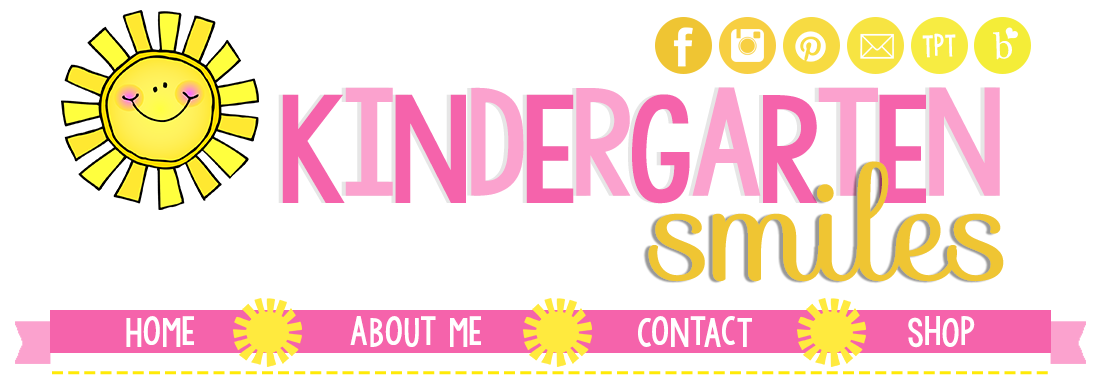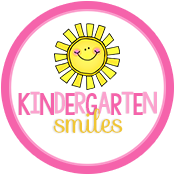Welcome to week 2 of our Freebielicious book study! This week we are digging in deeper to Chapter 2 in the Next Step to Guided Reading by Jan Richarson which is all about assessments! Our favorite ;)
Initial Assessments
The first week of school it is usually easy to assess whether the students can write their first/last name and their capital/lower case letters. I actually give them a page for their memory books that says 'This is how I write my name.' This page is a perfect page to keep for memories and also for me to see who is capable. Going into the second week of school I begin to test their letter names and sounds knowledge and I give them a very simple list of sight words to read (if they know majority of their letters/sounds). About a month into school I FAIR test. This is a Florida assessment that is done three times throughout the year and it tests vocabulary, phonemic awareness, letters/sounds, listening/reading comprehension, etc.
I also take an informal writing assessment the second week of school. Most of my students are usually not writing at all, but some will surprise me and be able to sound out an entire sentence! Like Jan Richardson says, a writing sample can show you a child's phonemic awareness, vocabulary, and concepts of print. You can look at the writing samples and ask yourself- Did the child create a story? Did the student record sounds in sequence? Did they spell any words correctly? Can they hear digraphs and blends? Did they write left to right?
Using These Assessments to Form Reading Groups
After I am finished with their initial assessments (usually the end of the second week of school) I can place them into a reading group. I make my groups; however, I don't officially start an actual reading group! We are still practicing rotating and I am still teaching them their literacy centers as discussed in week one of the book study. I like my groups to be no larger than 5 students; however, there are times where I am at 6 due to increasing class sizes! I am very flexible with my groups. One student that only knows half of their letter names and sounds may get placed in a middle level group. But, that same student may progress surprisingly fast and have to move up a group. They may even trade places with a student who knows almost all of their letters and sounds, but is not catching on to phonemic awareness. So these groups have the capability to constantly change.
Some Questions Teachers Ask About Assessment
Should I introduce the text used for an assessment?/
Should the student read the text silently first? No, a text that you are using for an assessment should not be one that the child has ever seen before. If the text has pictures, you can allow the child to do a picture walk. However, our FAIR test does not have pictures and the students will not be able to see the text at all prior to reading it. This is because you want to be able to see and note all of their initial mistakes.
What if the student asks for help? You try to remain as neutral as possible. Ask them to 'try again' or 'continue reading'. In our FAIR testing after a certain amount of time I can tell them the word that they are having trouble with, but I also mark it as a miscue.
How do I assess comprehension? After my students read a book I ask them to close their books and tell me everything they remember. I listen to see if they remember the characters names, things the characters said, etc. I also ask them questions informally. Our FAIR test will test their comprehension more formally than I would in a reading group.
How are texts leveled? We use a reading series, Journeys. This will be my first year with it (we are switching from Treasures). The reading series comes with leveled readers-beyond, on-level, and approaching.
How do I know when to move a student to a higher-level reading group? In my opinion, you just know! You can tell that a student is progressing faster than his/her group. They are reading their text fluently, accurately, AND they understand it. This means they need a more challenging group.
It's A Blog Hop!
Mary from Sharing Kindergarten is hosting this week. You can hop over there to read how other teachers assess their students or you can link up your own post!
Next Week
I am so excited to be one of the hostesses next week! Come back and join me to discuss Guided Reading Instruction for Pre-A and Emergent Readers.
___________________________________________________
I wanted to let you all know that I have redone a couple of my old units! Make sure to re-download them if you have already purchased them! You can see them by clicking on the images below :)

















Hi Caitlyn, great post! It's a rainy summer day here in Ohio so I'm starting to loosely map out how I want to do things next year. This was a perfect read for me!
ReplyDeleteI'm excited to follow the rest of the book study! Thanks for sharing!
Alisha
First Grade Follies
I enjoyed reading your posts on The Next Step... We began with Journeys last year. I never got a real handle on the Guided Reading portion. For one, we were provided with adequate resources to fill a year with our groups or to meet the ranges of our classes. We received everything for the large group instruction and I find that I liked that portion very much with some tweaking this year. Loved a lot of the shared reading and read aloud literature. I really liked the mix of F and NF too. In the past, we were using Rigby for Guided Reading which is very leveled and progressive, with a linear organization and you can almost put children in it like a continuum of skills and sight words gained. And I'm a very linear thinker. I couldn't wrap my mind around the progression of Journeys with the below, on and above system and the themed books. I really need to pull it out after vacation and study them. So I relied on Rigby again and supplemented with the Journeys.
ReplyDeleteGood luck and I hope you blog some about your experience with Journeys. I would love to reflect on what others think of it.
Donna Williams
Ooops! I meant not provided with adequate resources for the Guided Reading portion of the series!
ReplyDeleteI am new to the "kinder klub" =) You have provided so much inspiration!!! I visit almost every day!
ReplyDeleteGreat post. I also used Journeys this past year. Our schools were fortunate to work directly with the publishers to test it our in our grade levels the previous year (11-12). Due to that test run, our schools knew that the levels in the readers were not sufficient for our high leveled students. Our Central Office negotiated additional readers from another series (sorry I can't remember the name). Then when my kindergarten team used it last year we were very disappointed with how the levels are organized--they skip around way too much. Makes planning a night mare of sorts. The kits have a "zillion" level A books, okay amount of B, but C on up is lacking. This was really surprising since CCSS states that our students should be at a level D/E by the end of the year.
ReplyDeleteCute Stuff. My district doesn't use journeys but I'm sure I can find a way to integrate them.
ReplyDelete✰Janine
Kindergarten Corps